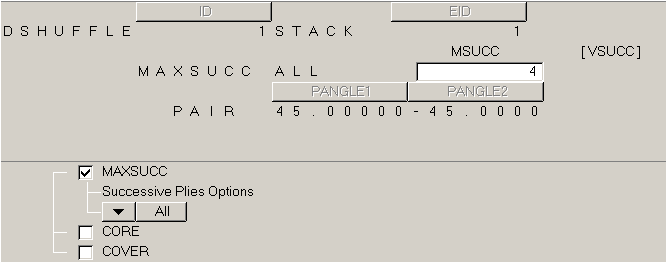In DSHUFFLE card, we can select three options including MAXSUCC, PAIR ,CORE/COVER(see figure attached). But, the plies of laminate structure is requested to be symmetric.How can I add this constraint in shuffle optimization ??
My firend ask me to test what will happen if 'PAIR 0 90 SAME' in DSHUFFLE card is added in .fem file. But Solver FAILED, the error message is ' BALANCE and PAIR constraints are only valid for 45.0 and -45.0 orientations at this point.' Hope someone can help me, thanks very much!
<?xml version="1.0" encoding="UTF-8"?>